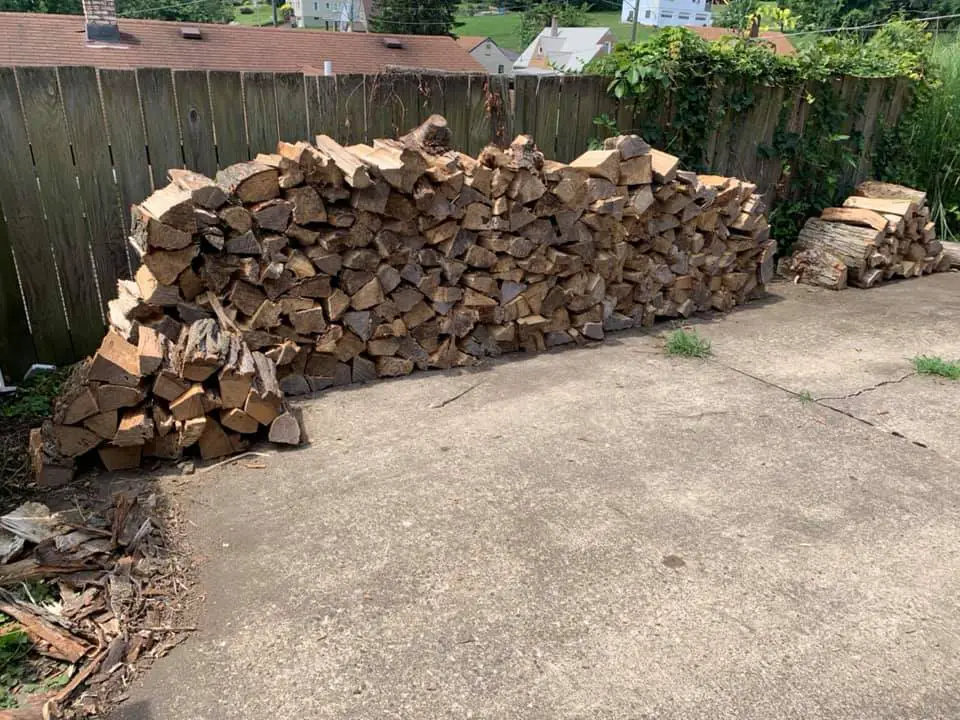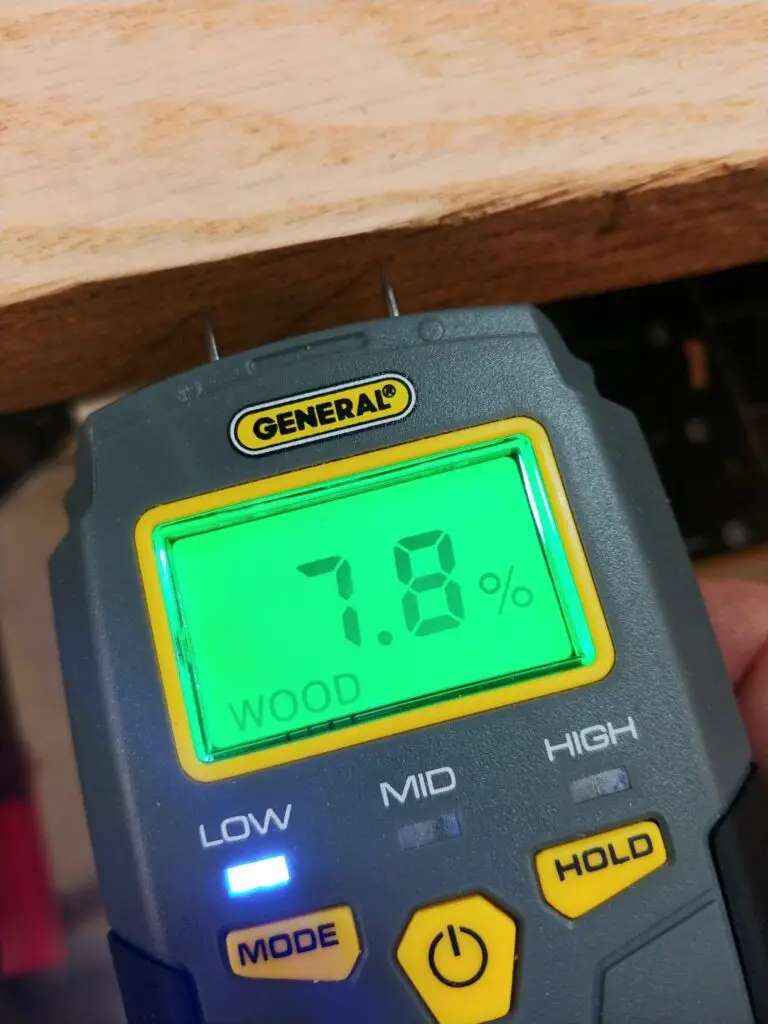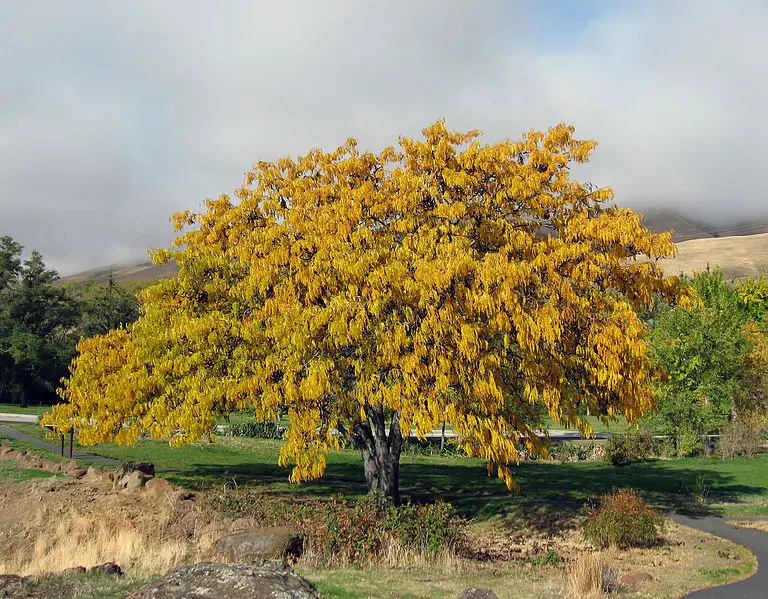Honey locust is great firewood that burns hot, clean, and produces a lot of heat. Since honey locust is a hardwood, it produces little creosote, making it a good choice for use indoors. It does burn hot enough to potentially warp wood stoves, so you’ll want to try smaller fires first to get a sense of how much heat a honey locust fire will produce.
You’ll get excellent coals from honey locust and little smoke, too. Honey locust takes a while to season – at least 18 months, and up to two years. Honey locust is a bit more expensive than other hardwoods, but its heat output means you’ll potentially use less honey locust than other firewood.
Table of Contents
Summary
- Heat Production: 26.7 million BTU/cord
- Weight: 4,640 lbs/cord green
- Seasoning Time: 18-24 months
- Splitting Difficulty: Easy
- Sap Content: Low
- Smoke: Low
- Smell: Slight
Honey locust produces very little smoke, and doesn’t have much of an odor while burning. This makes it a good choice for fireplaces, wood stoves, and outdoor firepits. Honey locust burns almost as hot as olive wood, one of the hottest-burning woods. Honey locust is both more affordable and available than olive wood.

Heat Production
Clocking in at 26.7 million BTU per cord, honey locust puts out a lot of heat, just behind Osage orange, Gamble oak, and American Holly. With a heat output this high, you’ll want to start with smaller fires if you’re burning honey locust indoors. Get a feel for how hot a honey locust fire is because a large honey locust fire burns hot enough to potentially warp wood stoves.
Since honey locust burns so hot, expect a clean fire that produces little ash or creosote. Honey locust does create a good bed of coals, but even those will burn down.
Smoke Generation
Honey locust doesn’t produce much smoke. It also has a slight smell, making it a good firewood choice for outdoor firepits. Indoors, the lack of smoke and smell is a good feature of this wood. Of course, you should never burn wood indoors without proper ventilation.
Remember that burning firewood that hasn’t been properly seasoned will produce more smoke. Wood with a moisture content higher than 20% is considered unseasoned and shouldn’t be burned. Unseasoned wood doesn’t produce as hot of a fire, either.
Seasoning Time
Honey locust takes 18-24 months to season. It’s a dense wood, so it takes time for all the water to work itself out of the wood fibers. Plan on splitting honey locust into smaller chunks to season, instead of letting it dry in round logs. Burning wood that isn’t seasoned can lead to creosote buildup in your stove and chimney, which presents a serious safety hazard.
You should buy a moisture meter to properly determine when your firewood is seasoned. These are relatively cheap, and you can find them at most hardware stores across the country. A moisture meter can tell you how far away your firewood is from being ready to burn.
I personally recommend this General Tools Moisture Meter. It allows you to accurately gauge how wet your firewood is and whether it is sufficiently seasoned. Over time you can also see how quickly the moisture is dropping and how much longer you need to keep your firewood dropping until it is seasoned and ready to burn.
Press the sharp pins into the wood and you will quickly see the readout show the moisture ranging from 5% to 50%. It also has a Low/Mid/High indication depending on whether the wood is dry enough, so you don’t need to remember the actual values.

Burning Smell
Honey locust doesn’t produce much of a smell. It puts off a slight odor, and that’s it. This is due, in part, to its low sap content. The lack of smell makes honey locust a good choice if you’re burning wood indoors, or if you have neighbors near your outdoor firepit.
I have written a guide on the best smelling firewoods to burn if you are particularly sensitive to smell.
Creosote Buildup
Honey locust doesn’t produce much creosote. It’s a hardwood that burns clean, hot, and long, so it leaves behind little ash. Woods that burn hot and long generally don’t cause much creosote buildup.
Creosote is a black ash that’s made of unburned wood particles. Creosote builds up in stoves and chimneys, and it’s combustible. Too much creosote presents a serious safety hazard, since it can catch on fire. Even if you burn hardwood, you’ll still want to regularly clean your chimney and stove to avoid excess creosote buildup. Green or soft woods are often the source of creosote buildup.
Splitting Difficulty
You’ll have an easy time splitting honey locust wood. It’s a straight-grained wood, so a sharp axe or maul will make quick work of it. If possible, try to split the honey locust when it’s still green for the easiest experience. Then, let the wood season properly before burning.
Different Types/Species
Honey locust is one type of white locust. The other common type you’ll find used for firewood is black locust. Both have similar profiles for use as firewood, although black locust has a slightly higher BTU rating. Black locust is also harder to split, but it takes less time to season than honey locust.
Both types of locust trees have thorns that make processing trees difficult. You’ll need to remove the thorns before processing a locust tree for firewood. Despite the thorns, locust trees benefit wildlife, and many different animals depend on them.
The honey locust grows to about 70 feet tall, with a fairly thick trunk. You should get a high yield of firewood per tree, if you plan to process the wood on your own.

Comparison to Other Woods
Let’s look at how honey locust compares to other popular hardwoods. Honey locust is fairly affordable, has a high BTU rating, and burns long, hot, and clean. However, it can be harder to find than popular firewood choices like oak or maple.
| Firewood | Million BTU/Cord (source) | Ease of Splitting | Coals | Overall Quality |
| Honey locust | 26.7 | Easy | Excellent | Excellent |
| Bur oak | 26 | Easy | Good | Excellent |
| Maple | 25 | Easy | Excellent | Excellent |
| Hemlock | 15.3 | Easy | Excellent | Good |
Honey locust has a great BTU rating, is easy to split, and produces a good bed of coals. It’s not as available or cheap as oak, but honey locust could make a great addition to any firewood stash.
Frequently Asked Questions
Can you burn honey locust in a firepit outdoors?
Yes, honey locust is a great wood to burn outdoors. It doesn’t produce much smoke, and it doesn’t smell. If you have neighbors near your outdoor firepit, honey locust is a good firewood choice that shouldn’t bother other people.
Is it safe to burn honey locust in a fireplace indoors?
Yes, honey locust is great firewood for fireplaces and wood stoves. However, since honey locust burns so hot, you’ll want to experiment with smaller fire sizes until you’re used to how much heat it produces. A hot fire has the potential to warp wood stoves.
How much does it cost to buy honey locust firewood?
Honey locust starts around $300 per cord, but can easily go higher depending on your location. Not all firewood suppliers have a good source of honey locust.
Conclusion
Honey locust is a great firewood, especially if you live in an area where it grows in abundance. It burns hot, clean, and long, creating great fires. There’s little ash, creosote, or smoke generated from burning honey locust. It does cost a bit more than other hardwoods, but its high BTU rating makes it worth the extra cost. If you want to add variety to your fire or have a good source for honey locust wood, it’s worth adding some to your firewood stack.
